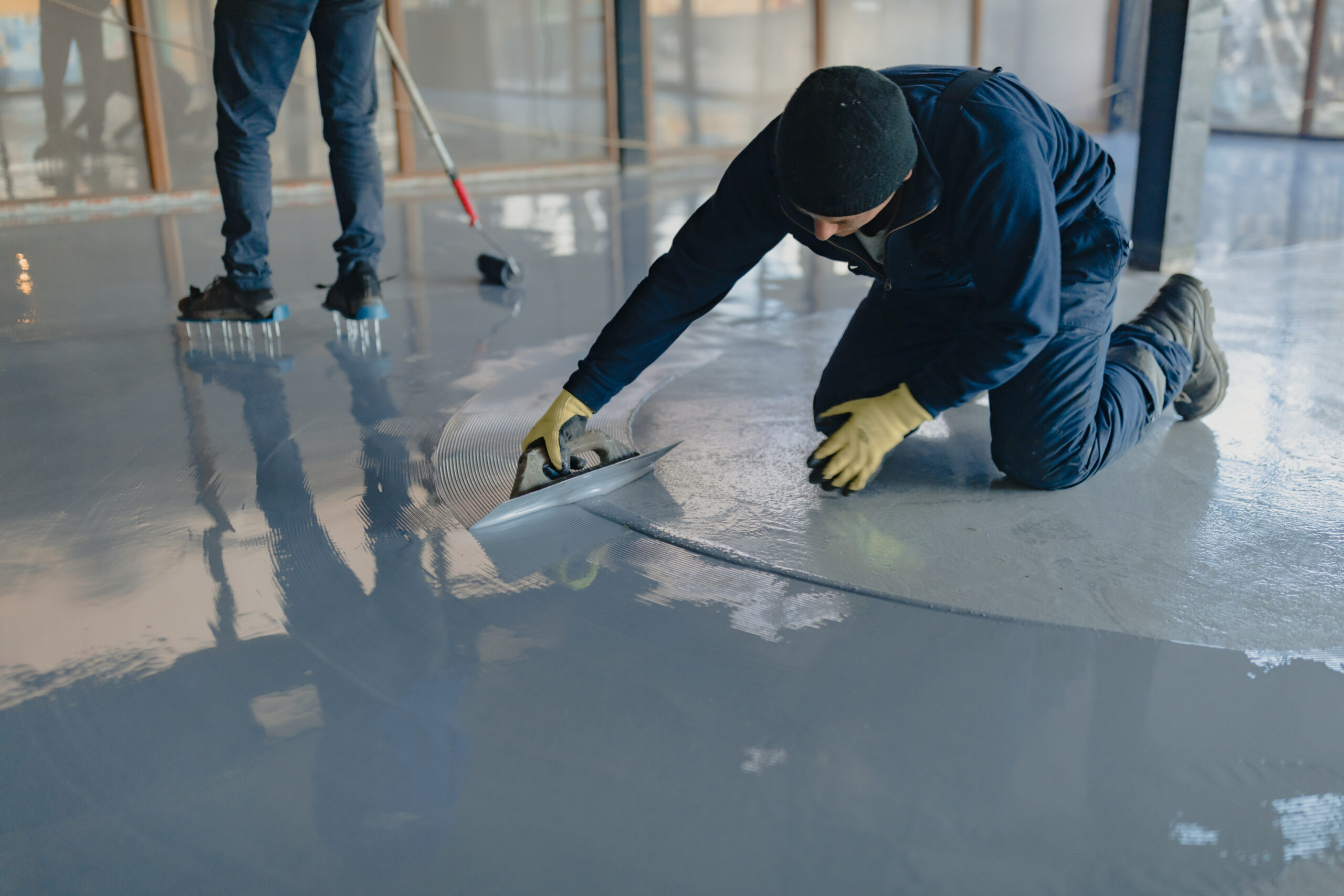Epoxy basement flooring is a popular choice for homeowners seeking durable, long-lasting, and visually appealing flooring solutions for their basement spaces. Epoxy coatings offer several advantages, including resistance to moisture, stains, chemicals, and abrasion. However, creating the right atmosphere is crucial for ensuring a successful epoxy basement flooring installation.
Optimal Temperature Range
Maintaining the right temperature is essential for the proper curing of epoxy coatings. The ideal temperature range for applying epoxy basement flooring typically falls between 50°F to 90°F (10°C to 32°C). Extreme temperatures can affect the epoxy’s curing process, leading to improper adhesion and curing issues. Therefore, it’s crucial to ensure the basement’s temperature falls within this range during installation.
Controlled Humidity Levels
Humidity levels in the basement can significantly impact the epoxy flooring installation process. High humidity can interfere with epoxy curing, leading to improper adhesion and potential issues with the finish. Ideally, humidity levels should be maintained between 40% to 60% during the application and curing process. Using a dehumidifier can help regulate humidity levels and create a suitable environment for epoxy flooring installation.
Clean and Dry Surface
Before applying epoxy coatings, it’s vital to prepare the basement floor properly. The surface should be clean, dry, and free of any debris, oil, grease, or existing coatings. Proper surface preparation ensures better adhesion and a smoother finish for the epoxy coating. Thoroughly cleaning the floor and repairing any cracks or imperfections beforehand is essential for a successful epoxy flooring installation.
Good Ventilation
Proper ventilation is crucial during the epoxy flooring installation process to ensure the removal of fumes and facilitate curing. Basements often have limited ventilation, so it’s essential to use fans and open windows or doors to improve air circulation. Adequate ventilation helps in dissipating solvent vapors released during the epoxy application, creating a safer and more comfortable environment for installers.
Avoid Moisture Issues
Moisture is a common concern in basements and can pose a significant risk to epoxy flooring installations. Before applying epoxy coatings, it’s essential to address any moisture issues such as leaks or seepage. Installing a vapor barrier or moisture mitigation system can help prevent moisture from reaching the epoxy surface and causing adhesion problems or delamination over time.
Proper Lighting
Good lighting is essential for achieving a high-quality epoxy flooring finish. Insufficient lighting can lead to uneven application and missed spots, resulting in an inconsistent appearance. Adequate lighting ensures installers can see the surface clearly during application, enabling them to achieve proper coverage and smooth out any imperfections.
Conclusion
Creating a suitable atmosphere is crucial for the successful installation of epoxy basement flooring. Maintaining the right temperature, humidity levels, cleanliness, ventilation, and addressing moisture issues are key factors to consider. By following these guidelines and ensuring proper surface preparation, homeowners can achieve durable, long-lasting, and visually appealing epoxy flooring in their basements.

